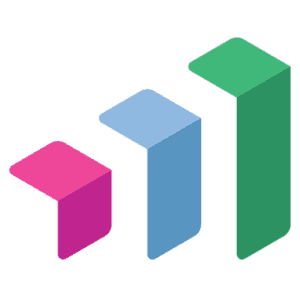Resource Management vs Capacity Planning: Why You Need Both
Resource management and capacity planning are indeed two different things. However, digital agencies must consider both as part of the same process to understand customer demand and effectively solve capacity challenges.
This guide will discuss the differences between resource management vs capacity planning and why your agency must use both.
Table of Contents
- What is resource management?
- What is capacity planning?
- Resource management vs capacity planning: The key difference
- Using resource management and capacity planning to predict demand
- The benefits of predicting customer demand
What is resource management?
Digital agencies spend a lot of time on the day-to-day management of resources. Resource management is the coordination of resources—the efficient assignment of the right people to projects. It helps agencies understand their current employees’ skill sets and what services they can deliver today.
The goal of resource management is often to maintain high utilization across all skill sets and roles. When agencies see a dip in utilization, their immediate response may be to push employees to find a way to bill more.
Many agencies also rely on resource management to tell them when it’s time to hire. They use the information to determine which roles they need to hire for or whether they need to outsource work to freelancers, contractors, or other agencies.
What is capacity planning?
Too often, agencies make hiring decisions without considering trends in customer demand. They’re managing their resources focused mostly on the here and now, but failing to forecast future demand in the long term.
Capacity planning helps agencies understand what their customers want now and predicts what they will want in the future. Knowing this can be the difference between investing in resources that support the agency’s future—or investing in ones whose skill sets you’ll have little need for down the road.
Resource management vs capacity planning: The key difference
By understanding what resource management and capacity planning are, the key difference between the two becomes apparent. While resource management focuses on assigning the right talent to keep projects moving forward in the “now,” capacity planning focuses on forecasting future needs.

It’s critical agencies know the difference between resource management and capacity planning and adopt behaviors that enable them to do both well. That way, they have the information needed to hire the right people and train for the right skill sets.

Using resource management and capacity planning to predict demand
Most agencies treat resource management and capacity planning as an either/or equation. However, agencies will quickly find themselves in deep water if resource management and capacity planning activities aren’t informing each other.
Agencies must address them as complementary parts of the same process. For example, to properly manage resources and hire for the right skill sets, you must also capacity plan. Capacity planning helps agencies read the tea leaves earlier by planning for future wants, needs, and social, cultural, and industry trends.
As a result, you can predict how customer demand is changing, understand how your services have changed over time, and assess the future of your services based on industry direction and demand.
How agencies lose when they don’t predict demand
Let’s consider a hypothetical scenario at an agency that spent so much time focused on resource management that they forgot to consider what was happening with customer demand (i.e., they weren’t capacity planning).
Warning: This situation might not feel all that hypothetical. It’s happened to us in our previous lives as agency leaders, and we know it happens at other agencies.
A mid-sized digital agency had a talented Flash developer on staff. He was a significant asset to the company, not just because he was highly skilled, but also because he represented the agency culture well.
Other employees admired him and he kept getting raises. As he made more money, the demand for Flash plateaued. But the agency wasn’t really paying attention; this employee had become such an essential part of the company culture. No one questioned his role or position in the agency.
Unfortunately, over time, he became too expensive. The agency couldn’t sell Flash development like it once could. The industry had moved on—front end development moved to HTML5 and Javascript. Unfortunately, the employee hadn’t learned those programming languages because the agency hadn’t invested in his training.
The business couldn’t justify what it was paying him and it was going to be too expensive to cross-train him. They lost a super valuable resource because no one took the time to understand how customer demands and industry trends would affect the agency’s resources, specifically this employee’s role. The agency failed to anticipate shifts in demand and value—and lost out big.

The benefits of predicting customer demand
Capacity planning helps you identify which of your team’s skill sets are becoming less relevant and profitable, so you know when to invest in professional development and training. Investing in the right employees at the right time ensures your people work toward a skill set that’s more valuable for the business’s future.
This not only keeps your employees engaged because they feel supported, but it enables you to invest in the right place to support future business growth. You’ll feel better about an employee having a lower billable capacity as they’re training when you know they’re working toward something that will support the business’s future.
1. You sustain the business
Just like with Flash, eventually, certain types of work become commodities. This changes the value and the demand for work, and agencies have to be ready to innovate and adjust so they don’t become irrelevant.
Capacity planning helps you sustain your business by considering the capacity you have available from individual skill sets on your team and how that stacks up to customer demand. It enables you to translate customer demand to your ability to deliver on it.
You get a clearer understanding of your capacity to take on new types of work (the stuff that supports innovation) and the capacity you have to keep doing your bread and butter work (the stuff that’s profitable today).
2. You invest energy and resources in the right places
Capacity planning helps you identify which of your team’s skill sets are becoming less relevant and profitable, so you know when to invest in professional development and training. Investing in the right employees at the right time ensures your people work toward a skill set that’s more valuable for the business’s future.
This not only keeps your employees engaged because they feel supported, but it enables you to invest in the right place to support future business growth. You’ll feel better about an employee having a lower billable capacity as they’re training when you know they’re working toward something that will support the business’s future.
3. You retain your best people
Investing in the right people at the right time based on what capacity planning tells you also helps you retain your best people. Keep your key employees in the loop about how demand is changing in the organization, so they can see where they’re most valuable to the business today—and where they will be in the future.
Better understand demand with Parallax
Parallax can help your business understand capacity beyond total hours and headcount of your resources. Our product’s capacity planning tool gives you a clearer picture of customer demand, so you can make strategic investments today to keep your business competitive and relevant tomorrow. Sign-up for a free demo today!
What is resource management?
What is resource management?
Resource management is the coordination of resources—the efficient assignment of the right people to projects. It helps agencies understand their current employees’ skill sets and what services they can deliver today. The goal of resource management is often to maintain high utilization across all skill sets and roles; many agencies also rely on resource management to tell them when it’s time to hire.
What is capacity planning?
Capacity planning helps agencies understand what their customers want now and predicts what they will want in the future. This helps companies know which resources to invest in that support the agency’s future and which they’ll have little need for down the road.
What is the difference between resource management and capacity planning?
Resource management focuses on the immediate and near-time; it’s about logistical coordination of resources to projects with the goal of allocating resources efficiently to improve utilization. Capacity planning focuses on resources needed in the mid- to long-term, helping to predict customer demand and understand which skill sets to hire or cross-train employees for in the future.
What is capacity planning in resource management?
Most agencies treat resource management and capacity planning as an either/or equation, but agencies must address them as complementary parts. To properly manage resources and hire for the right skill sets, they must also capacity plan. Capacity planning helps agencies plan for future wants, needs, and social, cultural, and industry trends, and as a result, they can predict how customer demand is changing, understand how services have changed over time, and assess the future of services based on industry direction and demand.
How can Parallax help you improve your resource management and capacity planning?
Parallax can help businesses understand capacity beyond total hours and headcount of their resources. Our product’s capacity planning tool gives agencies a clearer picture of customer demand, so they’re able to make more strategic investments and grow their business.
